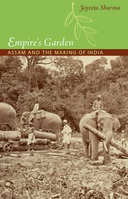Explore
In the mid-nineteenth century the British created a landscape of tea plantations in the northeastern Indian region of Assam. The tea industry filled imperial coffers and gave the colonial state a chance to transform a jungle-laden frontier into a cultivated system of plantations. Claiming that local peasants were indolent, the British soon began importing indentured labor from central India. In the twentieth century these migrants were joined by others who came voluntarily to seek their livelihoods. In Empire’s Garden, Jayeeta Sharma explains how the settlement of more than one million migrants in Assam irrevocably changed the region’s social landscape. She argues that the racialized construction of the tea laborer catalyzed a process by which Assam’s gentry sought to insert their homeland into an imagined Indo-Aryan community and a modern Indian political space.
This book is included in DOAB.
Why read this book? Have your say.
You must be logged in to comment.
Rights Information
Are you the author or publisher of this work? If so, you can claim it as yours by registering as an Unglue.it rights holder.Downloads
This work has been downloaded 789 times via unglue.it ebook links.
- 103 - pdf (CC BY-NC-ND) at OAPEN Library.
- 203 - pdf () at Unglue.it.
- 361 - pdf (CC BY-NC-ND) at OAPEN Library.
Keywords
- Ahom kingdom
- Assam
- Assamese language
- Bengal
- Bengali language
- British
- History
- History / Asia / India & South Asia
- India
- Kolkata
- KUnlatched
- Opium
- Tea
- Tea trade
Links
DOI: 10.1215/9780822394396Editions

